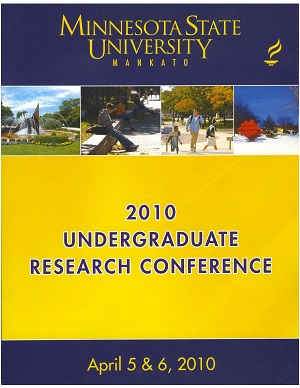Mathematical Modeling and Analysis of Chemotherapy Strategy in the Treatment of HIV
Location
CSU 284A
Start Date
6-4-2010 10:00 AM
End Date
6-4-2010 12:00 PM
Student's Major
Mathematics and Statistics, Biological Sciences
Student's College
Science, Engineering and Technology
Mentor's Name
Namyong Lee
Mentor's Department
Mathematics and Statistics
Mentor's College
Science, Engineering and Technology
Second Mentor's Name
Anne-Marie Hoskinson
Second Mentor's Department
Biological Sciences
Second Mentor's College
Science, Engineering and Technology
Description
The World Health Organization has reported that Acquired Immune Deficiency Syndrome (AIDS) has been found to be the second leading cause of death by diseases. Therefore, the importance of treating the disease has been greatly emphasized. These days, scientists have suggested that chemotherapy could be the most effective way of treating AIDS. We built a mathematical model of dynamics of the Human Immunodeficiency Virus (HIV) through a system of differential equations, which describes the interactions between the HIV and T-cells that are immune cells attacked by the HIV. The model produced the concentration rate of infected and uninfected T-cells over time when there is a medical intervention, called chemotherapy. We mathematically analyzed the dynamics of the immune system and the HIV and performed the computer simulations for various chemotherapy strategies.
Mathematical Modeling and Analysis of Chemotherapy Strategy in the Treatment of HIV
CSU 284A
The World Health Organization has reported that Acquired Immune Deficiency Syndrome (AIDS) has been found to be the second leading cause of death by diseases. Therefore, the importance of treating the disease has been greatly emphasized. These days, scientists have suggested that chemotherapy could be the most effective way of treating AIDS. We built a mathematical model of dynamics of the Human Immunodeficiency Virus (HIV) through a system of differential equations, which describes the interactions between the HIV and T-cells that are immune cells attacked by the HIV. The model produced the concentration rate of infected and uninfected T-cells over time when there is a medical intervention, called chemotherapy. We mathematically analyzed the dynamics of the immune system and the HIV and performed the computer simulations for various chemotherapy strategies.
Recommended Citation
Kim, Yu-Jeong; Jaehwan Byun; and Hyuck Jin Lee. "Mathematical Modeling and Analysis of Chemotherapy Strategy in the Treatment of HIV." Undergraduate Research Symposium, Mankato, MN, April 6, 2010.
https://cornerstone.lib.mnsu.edu/urs/2010/oral-session-10/3



